#invertiblr
Text


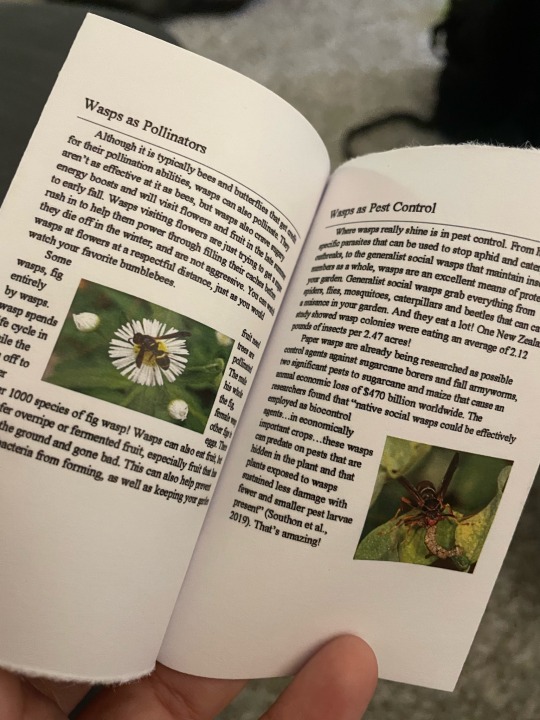
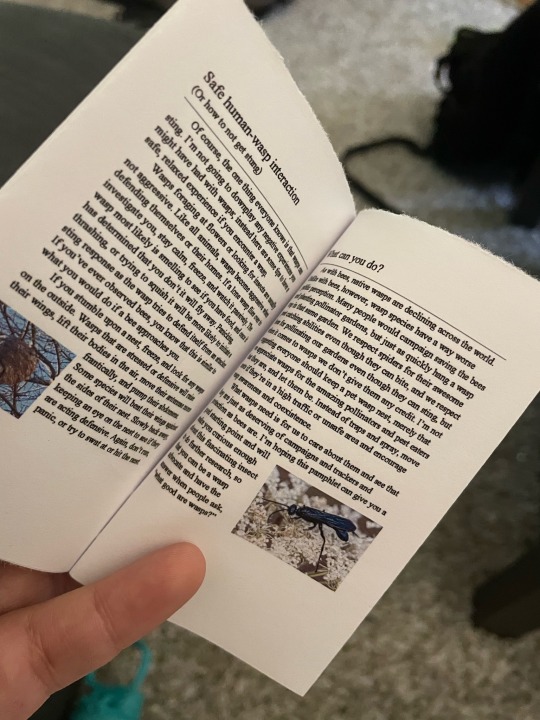
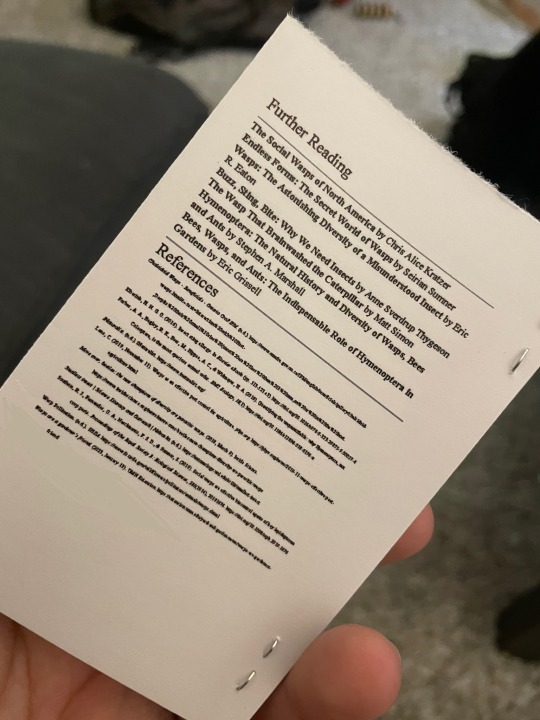
Finally got the full color version of my wasp zine printed!
Here's the full docx file if you want to read it!
5K notes
·
View notes
Text
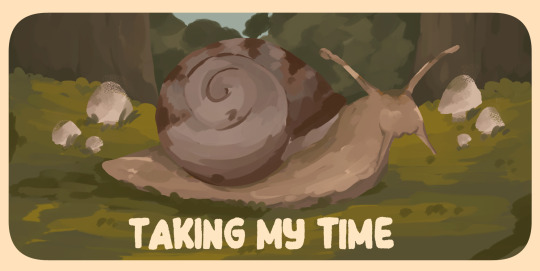
taking my time!
#illustration#artists on tumblr#illustrators on tumblr#snail#snail art#bug#bugs#bugblr#entomology#invertebrates#invertiblr#cute#bug art#insect art
153 notes
·
View notes
Text
Isopods — info page 🪵🪨
An isopod is a member of the order ISOPODA; it can range from marine to freshwater to terrestrial species. They are invertebrates, but are not actually insects, they are crustaceans. They are typically nocturnal.

Anatomy🌿
Generally, the body is quite flat and long. Their backs are covered by multiple plates, called the thorax, which has seven segments.
Most species grow only up to 0.7-35mm long, but a large marine species (Bathynomus giganteus) can grow up to 35cm!

🌿Diet
Isopods are detritivores, meaning they can eat decaying plant + animal material, and other sources like insects, dead leaves, moss, and wood.
They can eat both fruit and vegetable as well as animals.

Habitat🌿
A lot of species of isopod live in the ocean - deep sea, ocean floor, or on fish - some live in freshwater areas and others live on land.
On land, they are typically found living in forests, leaf litter, under wood, rocks, and in moist, high humidity areas.

🌿Woodlice / Pill Bugs
One of, or the most well known, isopod is the Pill Bug, also called Woodlouse and many, many other names, like Roly-Poly + Roll Up Bug! Woodlice are crustaceans, belonging to the suborder ONISCIDEA. A typical lifespan is 3-4 years with diet and habitat needs met.
Their diet consists of decaying matter, plant + animal, and leaves, moss, and old wood.
Their habitat is dark, damp areas such as under wood or rock.
Characteristics:
-> 14 legs for movement
-> Outer shell that has 7~ segments - as they get rid of their waste, ammonia passes out through the shell
-> A pair of antennae for orientation
-> Uropods (two ‘tubes’ at the back of their body) for navigation - some species use these to produce chemicals to deter any predators
As Pets:
-> Provide correct foods + water supply
-> Keep their enclosure moist and dark - soil cannot be too wet; excess moisture can cause them to die
-> Provide wood, rocks, and leaves for spaces to hide

— Anything that can be removed, changed, or added, please let me know! —
🪨🪳🪵🍃🪨🪳🪵

63 notes
·
View notes
Text





A jolly horse leech crossed my path
#leech#leeches#horse leech#invertebrates#invertiblr#invertebrate#amphibia#amphibian#animals#animal#nature#naturecore#wormblr#worm#worms#plaguecore#plague doctor#bog#bogcore#bogwitch#cornwall#united kingdom#Haemopis
64 notes
·
View notes
Text


#sea creatures#marine biology#biology#invertebrates#invertblr#bugblr#invertiblr#artists on tumblr#stickers#sticker sheet#clear stickers#shrimp#lobster#crab#nudibranch#small business#etsy#mu's wares
123 notes
·
View notes
Text









Some of my many creepy crawly pets
#petblr#pet#pets#bug#bugs#tw bugs#tw bug#spider#spiders#tw spiders#tw spider#tarantula#tarantulas#centipede#centipedes#invertiblr#invertebrates#invert#inverts#creepy#creepy crawlies#creepy cute#friends#scorpion#scorpions#scorp#scorps#baby animals#cute pets#original content
37 notes
·
View notes
Note
p.pretty please can i see soljema. solejame. sojelam. i forgot
please this is literally me -> 🥺
Here she is, being a silly little goober as always :3




Awwwwww just look at her in the fourth pic, all tucked into the corner ugh my heart🥺❤️
@crowned-lozar @theprofmoth @catboybiologist
#solejmaposting#tailless whip scorpion#amblypygid#amblypygi#damon medius#creepy cute#arachnids#invertebrates#invertiblr
34 notes
·
View notes
Text
MOTHS
GUYS MY FRIEND RAISES MOTHS AND HER FIRST ONE OF THIS YEAR JUST EMERGED!!!!!!



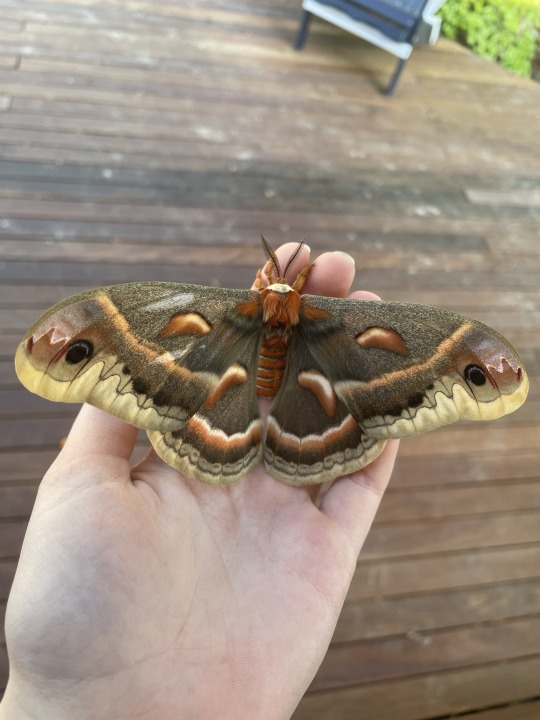

They raise cecropia moths, which are native to our region! They’re super pretty!!! This first one is a female, so they’re releasing her. If they don’t, they’ll end up with hundreds of caterpillars. Surprisingly, even though she just emerged, she’s already mated and laid a couple of eggs, which they’re gonna keep and raise next year :) these moths only live a few days as adults because they, like all other members of the family Saturniidae, don’t have mouths!! This setup is designed to let males stay inside the mesh, and wild females can mate with them to help add to the wild population.
#lepidoptera#entomology#bugblr#bugs#cecropia moth#moths#The moth is named Cecilia#lepidopterology#insects#moth post#invertebrates#invertiblr#mothblr#insectblr
41 notes
·
View notes
Text
HEY GUYS I NEED HELP!
I recently came into the possession of a giant millipede, multiple small millis, and twenty or so (probably more...) isopods. About 10 of them are giant canyon isopods. PLEASE HELP ME LEARN HOW TO CARE FOR THEM!
If you have any care tips pls lmk!!! I'm very new to taking care of insects and such but I have done much of my own research on how to care for them.
Currently I have all of these guys in a 15 gal tank, a heater pad is attached to one side, the soil is at an angle, lots of leaf litter and a good amount of moss, some cork and rotting wood bark, a little cork log, and a shallow water source incase it gets too dry.
I also have a humidity and temp reader I got from Runnings. I've been giving them ground up egg shells for calcium and some potatoes peels and a cucumber slice for extra nourishment.
The layers in the tank are as follows:
- some small pebbles for drainage
- coco coir
- mixture of peat-based substrate from the store, some work casting organic fertilizer, and more coco coir
- leaf litter and moss
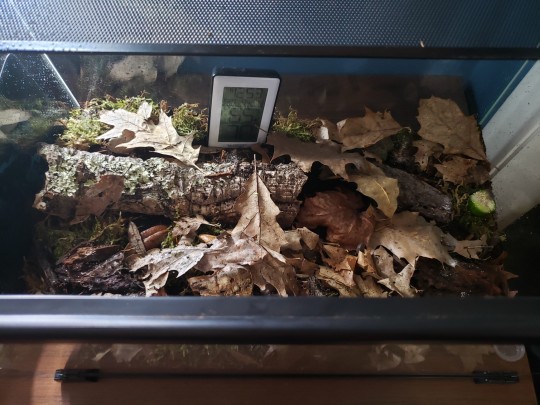
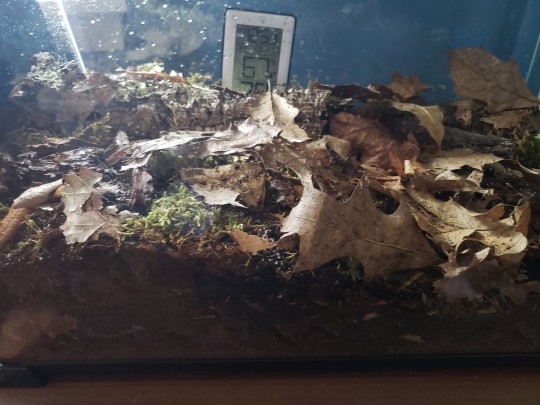
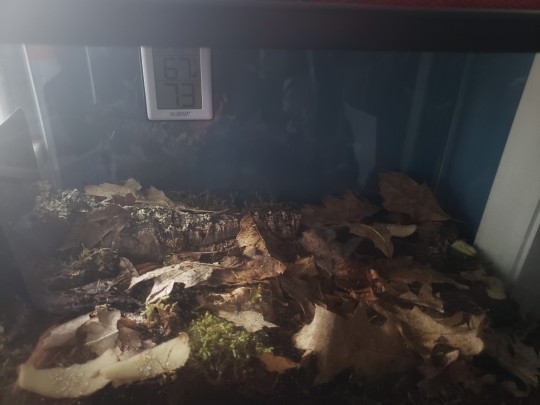
This is what it looks like ^^
It's placed in a generly dark area.
The millipedes name is Cranberry btw!!
(tw sh scars)
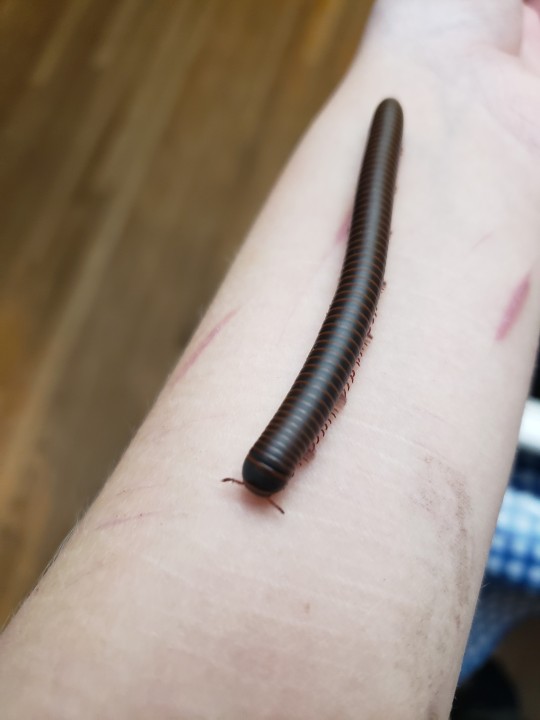
And these are the little goobers:
QUESTIONS I HAVE:
- How many insects can I put in one 15 gal tank?? How many isopods? Are there issues between them coexisting? I heard eggs might get eaten and if they aren't fed enough calcium they will try to eat eachother.
- Am I grinding up the egg shells enough? Are the peices too big? When I have the money I might just get cuttlefish bone but it can get pricy.
- How often should I clean??? I heard somewhere once a month but if it's a terrarium and not a singular creature and it's more of an ecosystem should I leave it alone other than feeding and spraying water n stuff?
- Can/should I put earthworms in the terrarium? What about snails/slugs? Would they be harmful or helpful?
UPDATE 5/11/24:
- I found a tiny spider guy in there. Is he chill??
#isopod#giant canyon isopod#millipede#millipedes#american giant millipede#help#terrarium#new terrarium owner#pill bugs#rolly polly#insects#bugs#critters#creatures#inverts#invertiblr#invertebrates#tw sh scars#sh scars#trigger warning#tw bugs#tw insects#animals#questions#care
23 notes
·
View notes
Text
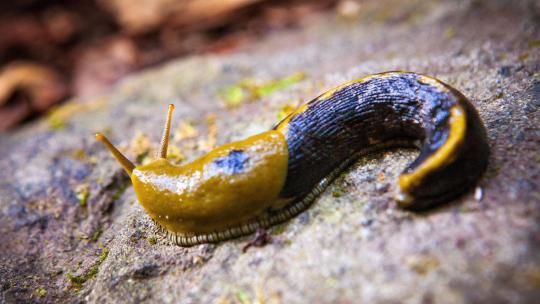
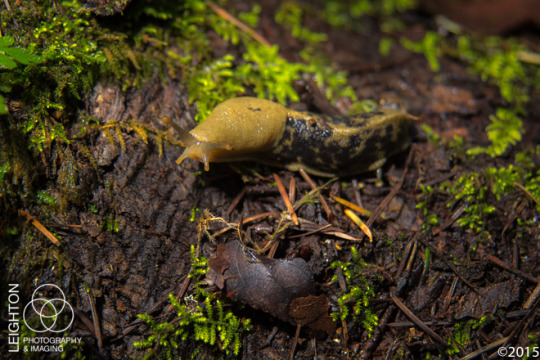
#my polls#tumblr polls#polls#animal polls#poll blog#animals#slug#banana slug#pacific banana slug#north american wildlife#invertiblr#invertebrates
26 notes
·
View notes
Text
Everyone here’s a judge isopod. At least for the ones I usually see.
18 notes
·
View notes
Text
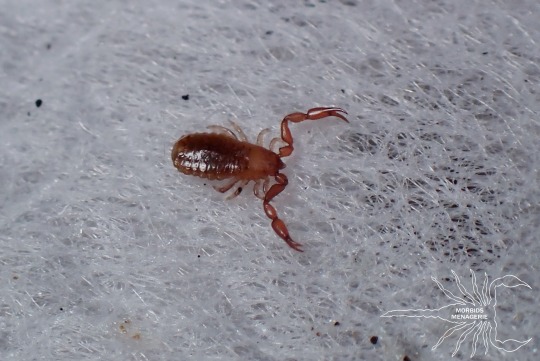


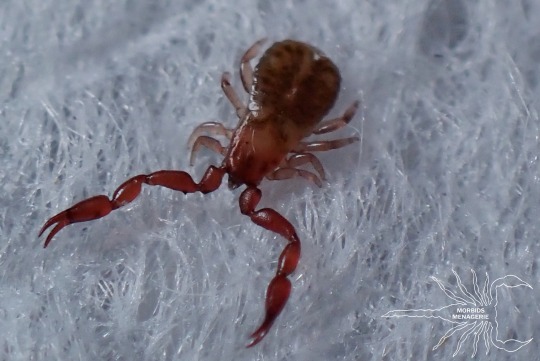






Finally got pseudoscorpions! I've been looking for these guys for a long time! Truly an amazing arachnid order.
627 notes
·
View notes
Text
There's a spider in my room that I've already seen twice, so it's safe to say it's my pet now (respectfully). It's very small and totally cute. It likes to walk on the wall behind my monitor, so I can see it strolling along gaily (or at least I hope it's happy; no idea if it's gay).
Since it's now my life companion and roommate, I thought it might be a good idea to name it. If you guys have any ideas, please, please drop them in a reblog or a comment (or a DM!?).
And if you want to tell the spidey it's cute, I'll be sure to pass the message along (once I see it again).
Click "Keep reading" to see the picture (warning: spider).
I tagged the post with all the spidey TWs I could find, but I know some people still don't like to see spiders; hence, I've decided to hide the picture.

Oh, and if you know what kind of spider it is, you can also let me know :)
#spider#spiders#arachnids#arthropods#invertebrates#pets#pet#pet invertebrates#cute animals#animals#animal#invertiblr#inverts#arachnid#tw arachnophobia#tw arachnids#tw spiders
18 notes
·
View notes
Text
Snails — info page 🐌🌿
A snail is a shelled GASTROPOD – large taxonomic class of invertebrates within the phylum mollusca and gastropeda – that includes land snails, sea snails, and freshwater snails. They are typically nocturnal and are hermaphrodites, meaning they have both male and female genitals/reproductive organs.

🌿Anatomy
A typical shell is calcareous - mostly composed of calcium carbonate - and is coiled into a spiralled pattern (the number of spirals depend on the type of snail).
The body consists of: the visceral lump, mantle, head, foot, and antennae. It is attached to the shell by one (or multiple) columellar muscle.
Visceral lump -> holds excretory, digestive, reproductive, and respiratory systems
Mantle -> for respiratory function and water balance
Head -> has one or two pairs of antennae and a mouth
Foot -> for movement and digging to lay eggs
Antennae -> for orientation and detecting scents

Diet🌿
A general diet of a snail consists of fruits, such as berries, vegetables like cucumber and lettuce, and leaves, bark, grass, and stems - a good source of calcium is good too!
Snails are omnivorous and also detritivorous, meaning they can feed on decaying waste too.

🌿Garden Snails
One of, or the most, popular type of snail is the garden snail. Garden snails are a species of land snail in the family HELICIDAE. A typical lifespan is around 2-5 years with diet and habitat needs met.
Their DIET is stems, leaves, lettuce, cucumber, bark, and berries. They can also eat crushed egg shells & other sources of calcium to protect their shells, lay eggs, and help with muscle contraction.
Their HABITAT is usually an undisturbed area with moisture and good water + food supply, like forests, wetlands, old fields, and gardens.
Characteristics:
Thick shell -> 4-5 whorls (spirals) + pale brown, brown, or yellow with dark spiral bands
Mouth -> large with a thickened white lip
Body -> brown-grey colour
As Pets:
- provide correct foods + water supply (a water bowl that isn’t too deep or none at all, spraying water inside the enclosure is fine)
- use dechlorinated water to spray inside their enclosure to keep moist
- wash hands before + after handling to prevent dehydration and possible disease spreading (handling isn’t always recommended/encouraged)
- clean soil/substrate (that has no pesticides) every 1-2 weeks

Giant African Land Snails🌿
Another well-known type of snail is the Giant African Land Snail. Giant African Land Snails are a species of land snail in the family ACHATINIDAE. This species has been/is considered an invasive species. A typical lifespan is 3-6 years, but can go up to 10~, with diet and habitat needs met.
Their DIET is grass, cress, cucumber, lettuce, and cabbage. They can also eat crushed egg shells & other sources of calcium to protect their shells, lay eggs, and help with muscle contraction.
Their HABITAT is usually agricultural areas, forests, and/or wetlands. They are native to eastern Africa.
Characteristics:
Shell -> large; the size of an average adult fist (full size), it can reach to approx. 20cm in length + 10cm in diameter, brownish + dark vertical stripes
As Pets:
- provide correct foods + water supply (a water bowl that isn’t too deep or none at all, spraying water in the enclosure is fine)
- use dechlorinated water to spray inside their enclosure to keep moist
- wash hands before + after handling to prevent dehydration and possible disease spreading (handling isn’t always recommended/encouraged)
- clean soil/substrate (that has no pesticides) every 1-2 weeks

— Anything that can be removed, changed, or added, please let me know! —
🌿🐌🌱🐌☘️🐌🌱🐌🌿

19 notes
·
View notes
Text



look at this big baby that i caught literally just hanging around my bathroom
16 notes
·
View notes
Text
Throwback to when I bred Hyllus diardi! Absolutely adorable baby jumpers ❤️
8 notes
·
View notes